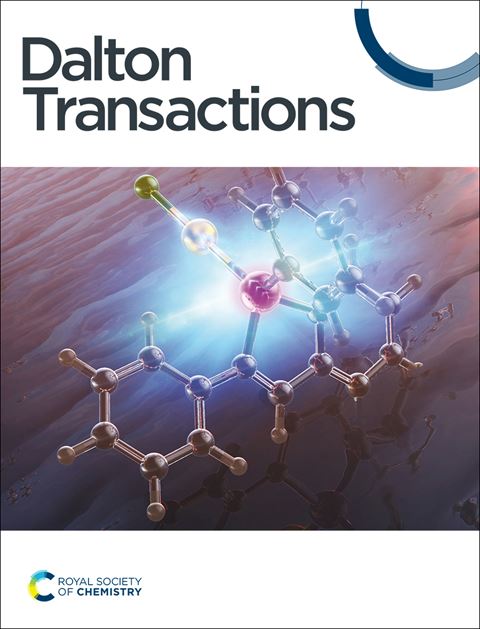SIMDAVIS 1.2:膦酸盐是优秀的SIM配体。冠醚则不然。
IF 3.5
3区 化学
Q2 CHEMISTRY, INORGANIC & NUCLEAR
引用次数: 0
摘要
本文介绍了最新的镧系单离子磁体(mn - sims)数据集和分析工具SIMDAVIS 1.2,重点研究了各种配体对其磁性能的影响。修订后的数据集可通过用户友好的在线仪表板访问,包含来自400多份出版物的10,000多个数据点,涉及化学和物理性质。值得注意的是,该研究重新定义了配体的分类,将磷酸盐基配体作为一个独特的家族引入,并强调了它们作为SIM配体的优越性能,而不是有效的替代品,如冠醚。磷酸盐表现出有希望的五边形双锥体几何形状,通过最小化低能振动相互作用来增强磁稳定性。对比分析表明,虽然与其他主要配体相比,膦酸盐可能具有中等的Ueff值,但它们的磁记忆和磁滞特性与双酞菁或茂金属三明治相当。这项工作强调了合理的配体选择和节俭的数据驱动方法在设计有效的Ln-SIMs中的重要性,为单离子磁铁设计策略的优化提供了有价值的见解。本文章由计算机程序翻译,如有差异,请以英文原文为准。
SIMDAVIS 1.2: Phosphonates are outstanding SIM ligands. Crown ethers are not.
This study presents SIMDAVIS 1.2, an updated dataset and analysis tool for lanthanide-based single-ion magnets (Ln-SIMs), focusing on the role of various ligands in influencing their magnetic properties. The revised dataset, accessible via a user-friendly online dashboard, encompasses over 10,000 data points on chemical and physical properties derived from more than 400 publications. Notably, the study redefines ligand classifications, introducing phosphonate-based ligands as a distinct family and highlighting their superior performance as SIM ligands compared to less effective alternatives such as crown ethers. Phosphonates exhibit promising pentagonal bipyramidal geometries that enhance magnetic stability by minimizing low-energy vibrational interactions. Comparative analysis reveals that while phosphonates may have moderate Ueff values compared to other leading ligands, their magnetic memory and hysteresis properties are comparable to those of bis-phthalocyaninato or metallocene sandwiches. This work emphasizes the importance of rational ligand selection and frugal data-driven approaches in the design of effective Ln-SIMs, contributing valuable insights into the optimization of single-ion magnet design strategies.
求助全文
通过发布文献求助,成功后即可免费获取论文全文。
去求助
来源期刊

Dalton Transactions
化学-无机化学与核化学
CiteScore
6.60
自引率
7.50%
发文量
1832
审稿时长
1.5 months
期刊介绍:
Dalton Transactions is a journal for all areas of inorganic chemistry, which encompasses the organometallic, bioinorganic and materials chemistry of the elements, with applications including synthesis, catalysis, energy conversion/storage, electrical devices and medicine. Dalton Transactions welcomes high-quality, original submissions in all of these areas and more, where the advancement of knowledge in inorganic chemistry is significant.
 求助内容:
求助内容: 应助结果提醒方式:
应助结果提醒方式:


